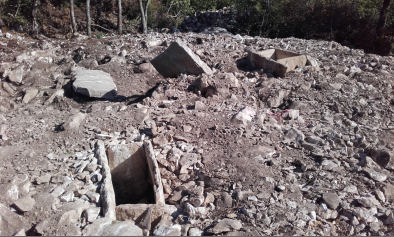Dr Helena Tomas (Associate Professor in Aegean Archaeology and Mycenaean Epigraphy, University of Zagreb) will address the topic “Eastern Adriatic and the Aegean in the Bronze Age: a mutual self-disclosure?”. This will be the 5th meeting of the Mycenaean Seminar this year.
The lecture will be held in english.
Abstract
Whereas wide areas of the Mediterranean have produced abundant evidence for maritime contacts with the Aegean, the coast that extends to the north of Greece – the eastern Adriatic – has been mostly neglected. In the second half of the 1st millennium BC several Greek colonies were established there, but to the Late Bronze Age inhabitants of Greece those waters were for some reason distant and obscure. Sporadic finds confirm that a certain mutual awareness existed between the Aegean and the eastern Adriatic coast, but some unidentified circumstances seem to have prevented the latter from achieving a more significant role in Mycenaean maritime networks.
During earlier times, however, that coast was not as marginal to the Aegean world. The period in question is Early Bronze Age when Cetina Culture saw its birth in the valley of the eponymous river in the hinterland of the eastern Adriatic coast (present day Croatia). The pottery typical of the Cetina Culture subsequently spread to the Italian and northern Adriatic coasts, central Balkan Peninsula, Albania, and the Aegean. It is fairly safe to suggest that such a wide radius of pottery dissemination was a product of an economic exchange. Bronze objects discovered in the Cetina tumuli, and the fact that the initial area of the Cetina Culture contained no metal sources, leads us to conclude that metal was obtained through trade, and that the Cetina people may have traded their pottery (or its contents) for metal. The distribution of the Aegean sites with Cetina pottery suggests that they lay along a route by which the Cetina people travelled towards Aegean sources of raw materials, perhaps even towards the Laurion mine itself.
It would be very enlightening to establish that the Cetina people did indeed travel all the way to Attica to import metal ores – in other words, to establish that metal from Laurion may have been exported outside the Aegean at such early times. Metal trade, which was a spiritus movens throughout the whole of the Aegean Bronze Age, may have had wider horizons than so far presumed.
The Organising Committee: Nagia Polychronakou-Sgouritsa, Iphiyenia Tournavitou, Emilia Banou, Aphrodite Chasiakou
